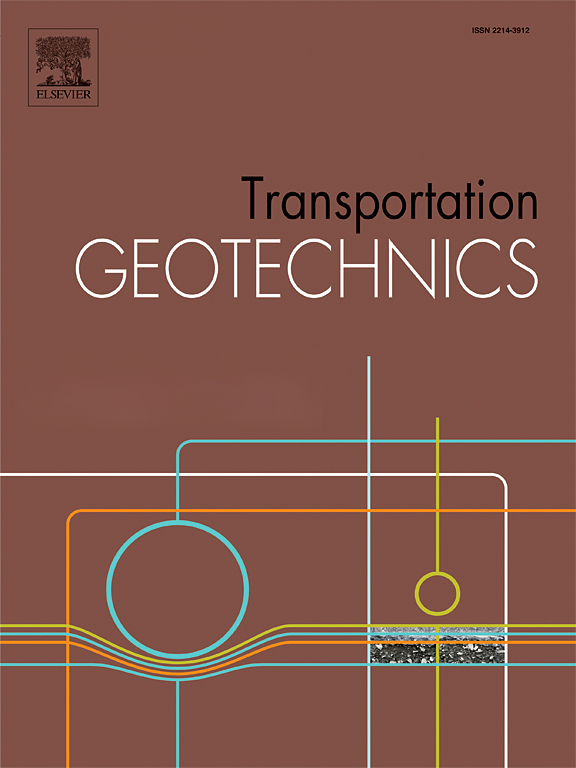Evaluation of the methods used for estimating the bearing capacity of stone columns
IF 4.9
2区 工程技术
Q1 ENGINEERING, CIVIL
引用次数: 0
Abstract
Stone columns have been utilized for several decades due to their ability to improve the mechanical behavior of weak and marginal soil deposits. Reducing the cost of a project necessitates accurate estimation of the stone column capacity. This paper considers the existing analytical methods for estimating the bearing capacity of stone columns and evaluates their prediction accuracy. For this purpose, the results of 36 full-scale field tests on footings supported by stone columns are considered, and the measured bearing capacities (QM) are compared with the estimated bearing capacity (QE) values computed from 15 analytical solutions predicting the stone column capacity. For this comparison, five statistical approaches are employed in order to evaluate these 15 methods and identify the level of their prediction accuracy. Finally, the methods are ranked by the degree of accuracy with which they can estimate the load capacity. The findings of this research help designers and decision makers to choose a more reliable design method when dealing with stone columns.
评估用于估算石柱承载能力的方法
由于石柱能够改善薄弱和边缘土壤沉积的机械性能,几十年来石柱一直被广泛使用。要降低工程成本,就必须准确估算石柱的承载力。本文探讨了估算石柱承载力的现有分析方法,并对其预测精度进行了评估。为此,本文考虑了对石柱支撑的基脚进行的 36 次全面现场测试的结果,并将测得的承载力(QM)与根据 15 种预测石柱承载力的分析方法计算得出的估计承载力(QE)值进行了比较。为了进行比较,我们采用了五种统计方法来评估这 15 种方法,并确定其预测准确性的高低。最后,根据这些方法估算承载能力的准确程度对其进行排序。研究结果有助于设计人员和决策者在处理石柱时选择更可靠的设计方法。
本文章由计算机程序翻译,如有差异,请以英文原文为准。
求助全文
约1分钟内获得全文
求助全文
来源期刊

Transportation Geotechnics
Social Sciences-Transportation
CiteScore
8.10
自引率
11.30%
发文量
194
审稿时长
51 days
期刊介绍:
Transportation Geotechnics is a journal dedicated to publishing high-quality, theoretical, and applied papers that cover all facets of geotechnics for transportation infrastructure such as roads, highways, railways, underground railways, airfields, and waterways. The journal places a special emphasis on case studies that present original work relevant to the sustainable construction of transportation infrastructure. The scope of topics it addresses includes the geotechnical properties of geomaterials for sustainable and rational design and construction, the behavior of compacted and stabilized geomaterials, the use of geosynthetics and reinforcement in constructed layers and interlayers, ground improvement and slope stability for transportation infrastructures, compaction technology and management, maintenance technology, the impact of climate, embankments for highways and high-speed trains, transition zones, dredging, underwater geotechnics for infrastructure purposes, and the modeling of multi-layered structures and supporting ground under dynamic and repeated loads.
 求助内容:
求助内容: 应助结果提醒方式:
应助结果提醒方式:


